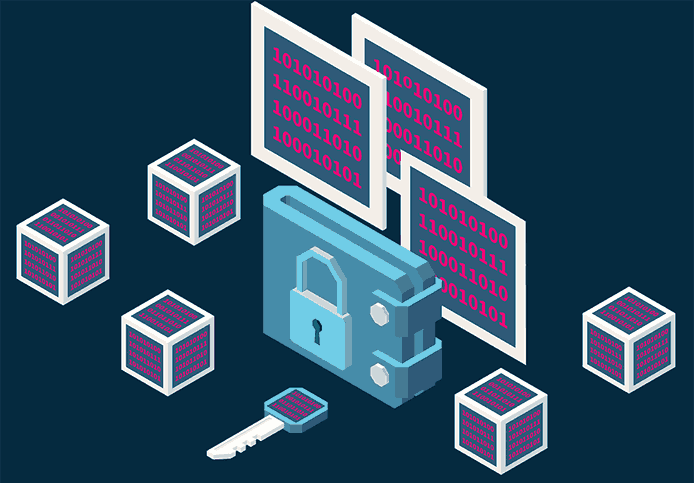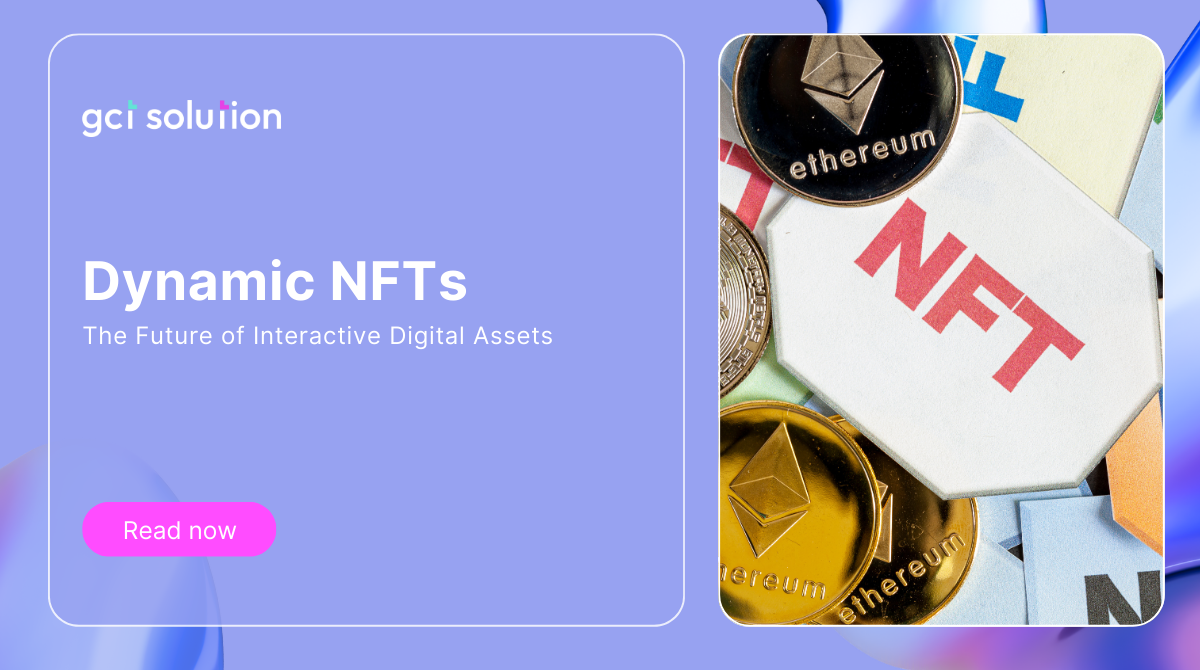Cross-Chain Solutions: Simplifying Blockchain Interoperability
Imagine if you could seamlessly move your digital assets or data between different blockchain networks—without the hassle of complicated processes or technical limitations. That’s exactly what cross-chain solutions aim to achieve. They act like bridges, connecting otherwise isolated blockchains, making them work together more effectively.
Blockchain technology has grown immensely, but most networks still operate in silos, limiting their true potential. Cross-chain solutions break these barriers, allowing different blockchains to communicate, share data, and exchange assets effortlessly. The result? A more connected, collaborative, and efficient blockchain ecosystem.
1. Why Do Cross-Chain Solutions Matter?
Think about the decentralized finance (DeFi) world. Currently, if you hold assets on Ethereum but want to participate in a Binance Smart Chain-based project, you’ll face obstacles like managing wallets, navigating bridges, and incurring extra costs. Cross-chain solutions simplify this process, enabling:
- Frictionless Transfers: Move your tokens or data from one blockchain to another in minutes.
- Developer Flexibility: Build decentralized applications (dApps) that harness the power of multiple blockchains.
- User-Friendly Systems: Create smoother experiences for end-users by integrating features from different blockchains.
You can also like this blog: The Ultimate Guide to Blockchain Interoperability: Unlocking Seamless Cross-Chain Connectivity
2. How Cross-Chain Solutions Actually Work
You don’t need a technical background to understand the basics of how cross-chain solutions operate. Think of them as digital translators or highways connecting various blockchain networks. Here’s how they make magic happen:
The Backbone Technologies
- Cross-Chain Bridges:
Imagine a toll bridge between two cities. Cross-chain bridges work similarly, transferring tokens or assets between blockchains. For instance, Ethereum and Binance Smart Chain are connected through bridges that let users exchange tokens between the two. - Atomic Swaps:
Ever traded one item for another without needing a third party? Atomic swaps work the same way, allowing two people to exchange tokens from different blockchains directly, securely, and without intermediaries. - Sidechains:
Sidechains are like “helper” networks that connect to a main blockchain. For example, Polygon is a sidechain that scales Ethereum, handling extra transactions to make things faster and cheaper. - Decentralized Messaging Protocols:
These protocols ensure blockchains can exchange information reliably, like Polkadot’s Relay Chain, which powers communication between its connected chains (parachains).
Security is the Priority
To keep these processes safe, cross-chain solutions rely on:
- Cryptographic Signatures: Ensuring that transactions are authentic and tamper-proof.
- Decentralized Validators: Removing single points of failure by distributing decision-making across multiple validators.
- Smart Contract Audits: Regularly reviewing code to catch vulnerabilities before hackers do.

3. Why Businesses and Users Love Cross-Chain Solutions
Cross-chain solutions are revolutionizing how blockchains interact, and their impact is hard to overstate. Here are just a few reasons why they’re becoming a game-changer:
Unlocking Liquidity Across Chains
Picture this: You hold tokens on a blockchain with limited DeFi options. Cross-chain solutions let you move those tokens to another blockchain with more liquidity, more opportunities, and better returns. They essentially make money work harder for users.
Supercharging Scalability
Think of a blockchain as a highway. When traffic builds up, delays occur. Cross-chain solutions allow the “traffic” to spread across several highways (blockchains), ensuring faster transaction speeds and lower costs. This scalability makes the ecosystem more efficient.
Creating Seamless Experiences
No more juggling multiple wallets or jumping through hoops to participate in projects on different blockchains. Cross-chain solutions simplify processes, creating user-friendly systems for blockchain enthusiasts and newcomers alike.
4. Real-World Applications of Cross-Chain Solutions
Cross-chain solutions are more than just theoretical advancements—they’re already transforming industries and solving real-world problems. Here’s a closer look at how they’re being used:
In Decentralized Finance (DeFi)
DeFi platforms thrive on liquidity and flexibility, but blockchain fragmentation often limits their potential. Cross-chain solutions break down these barriers by enabling:
- Multi-Chain Liquidity Pools: Users can pool assets from different blockchains, boosting liquidity and creating more robust financial ecosystems.
- Cross-Chain Lending and Borrowing: Borrow on one blockchain while collateralizing assets on another, unlocking financial opportunities that were previously impossible.
For NFTs and Gaming
The world of non-fungible tokens (NFTs) and blockchain gaming is evolving rapidly, but interoperability is crucial to unlocking their full potential. Cross-chain solutions make it possible to:
- Trade NFTs Across Marketplaces: Move your NFTs seamlessly between platforms like Ethereum and Binance Smart Chain.
- Portable Gaming Assets: Use in-game items or tokens across multiple games, creating a more interconnected gaming ecosystem.
You can also like this blog:
Dynamic NFTs: The Future of Interactive Digital Assets
In Supply Chain and Logistics
Cross-chain solutions are also making waves in traditional industries. For example:
- Supply Chain Transparency: Blockchains from different suppliers and logistics providers can communicate to ensure end-to-end visibility.
- Cross-Industry Collaboration: Different blockchain systems (e.g., finance, shipping, and retail) can work together seamlessly to track and verify goods.
You may also like this blog:
Blockchain Supply Chain - A Comprehensive Explanation
5. Key Players Driving Cross-Chain Innovation
The development of cross-chain solutions wouldn’t be possible without the efforts of several forward-thinking blockchain projects. Here are some of the leaders making interoperability a reality:

Polkadot
Polkadot is a pioneer in cross-chain communication, using its Relay Chain to connect multiple parachains. This system allows blockchains to share data and resources while maintaining their independence. Polkadot’s scalability and security features make it a favorite among developers.
Cosmos
Known for its Inter-Blockchain Communication (IBC) protocol, Cosmos is often referred to as the “internet of blockchains.” It enables blockchains to interact effortlessly, supporting decentralized applications that span multiple networks.
Chainlink
Chainlink takes a different approach by offering the Cross-Chain Interoperability Protocol (CCIP), which facilitates secure data and asset transfers between blockchains. Chainlink’s focus on decentralized oracles makes it a trusted choice for projects requiring reliable external data.
Avalanche
Avalanche uses subnets to enable interoperability between blockchains. These customizable subnets allow developers to build specific cross-chain functionalities tailored to their needs.
6. Challenges Facing Cross-Chain Solutions
Despite their potential, cross-chain solutions are not without hurdles. Understanding these challenges is key to building better systems:
Security Risks
Cross-chain bridges, a vital component of interoperability, are often targeted by hackers. High-profile exploits, such as the $320 million Wormhole bridge attack, highlight the need for robust security measures.
Complexity in Implementation
Building and maintaining cross-chain systems require advanced technical expertise. Differences in consensus mechanisms, programming languages, and network structures add layers of complexity.
Regulatory Uncertainty
As blockchain networks span across jurisdictions, compliance with varying regulations becomes a challenge. Standardizing cross-chain interactions while adhering to local laws remains an ongoing issue.
7. Future Trends in Cross-Chain Solutions
The future of blockchain technology is inherently tied to the evolution of cross-chain solutions. As the industry grows, these trends are set to shape the next generation of interoperability tools:
Universal Standards for Interoperability
The blockchain industry currently lacks universal protocols for communication between networks. Organizations are working on standardizing cross-chain frameworks, which will simplify development and improve compatibility across ecosystems.
Integration Beyond Blockchain
Cross-chain solutions are poised to connect blockchain networks with traditional systems, such as banking, supply chain databases, and the Internet of Things (IoT). This hybrid approach will unlock broader use cases and drive mainstream adoption.
Enhanced Security Features
Emerging technologies like zero-knowledge proofs and advanced cryptographic techniques will bolster the security of cross-chain systems. These innovations aim to reduce vulnerabilities in bridges and other interoperability mechanisms.
AI-Powered Interoperability
Artificial intelligence and machine learning will play a key role in optimizing cross-chain communication. These tools can analyze transaction patterns, predict network congestion, and automatically route transfers through the most efficient paths.
8. How to Choose the Right Cross-Chain Solution
With so many options available, selecting the right cross-chain solution depends on your specific needs. Here’s a framework to help you decide:

Factors to Consider
- Security:
- Look for solutions with proven track records and robust safety measures.
- Example: Chainlink CCIP employs decentralized oracles for secure data exchange.
- Scalability:
- Ensure the solution can handle growing transaction volumes without sacrificing performance.
- Example: Polkadot’s parachain architecture is designed for high scalability.
- Cost-Effectiveness:
- Compare transaction fees and operational costs across different protocols.
- Example: Cosmos offers an affordable and developer-friendly environment.
Comparing Leading Cross-Chain Protocols
|
Protocol |
Key Features |
Best For |
Scalability |
Security |
|
Polkadot |
Relay Chain, Parachains |
DeFi, dApps, Gaming |
High |
High |
|
Cosmos |
Inter-Blockchain Communication |
Supply Chain, dApps |
Moderate |
Moderate |
|
Chainlink CCIP |
Decentralized Oracle Networks |
Smart Contracts, DeFi |
High |
High |
|
Avalanche |
Subnet Customization |
Enterprise Applications |
High |
High |
Final Thought:
Cross-chain solutions are reshaping how blockchains interact, creating opportunities for innovation and collaboration across industries. Whether you’re a developer, business leader, or blockchain enthusiast, understanding these technologies is crucial for navigating the evolving Web3 landscape.
By enabling seamless communication and collaboration, cross-chain solutions pave the way for a more connected and efficient blockchain ecosystem. As new advancements emerge, the possibilities will only expand, making this an exciting time for blockchain innovation.
Take your blockchain projects to the next level with innovative cross-chain technology. Discover how seamless interoperability can enhance your business Explore Cutting-Edge Solutions at GCT. Start building a connected future today!











.png)
